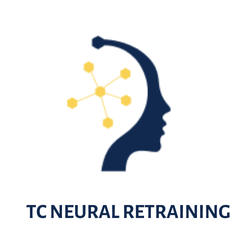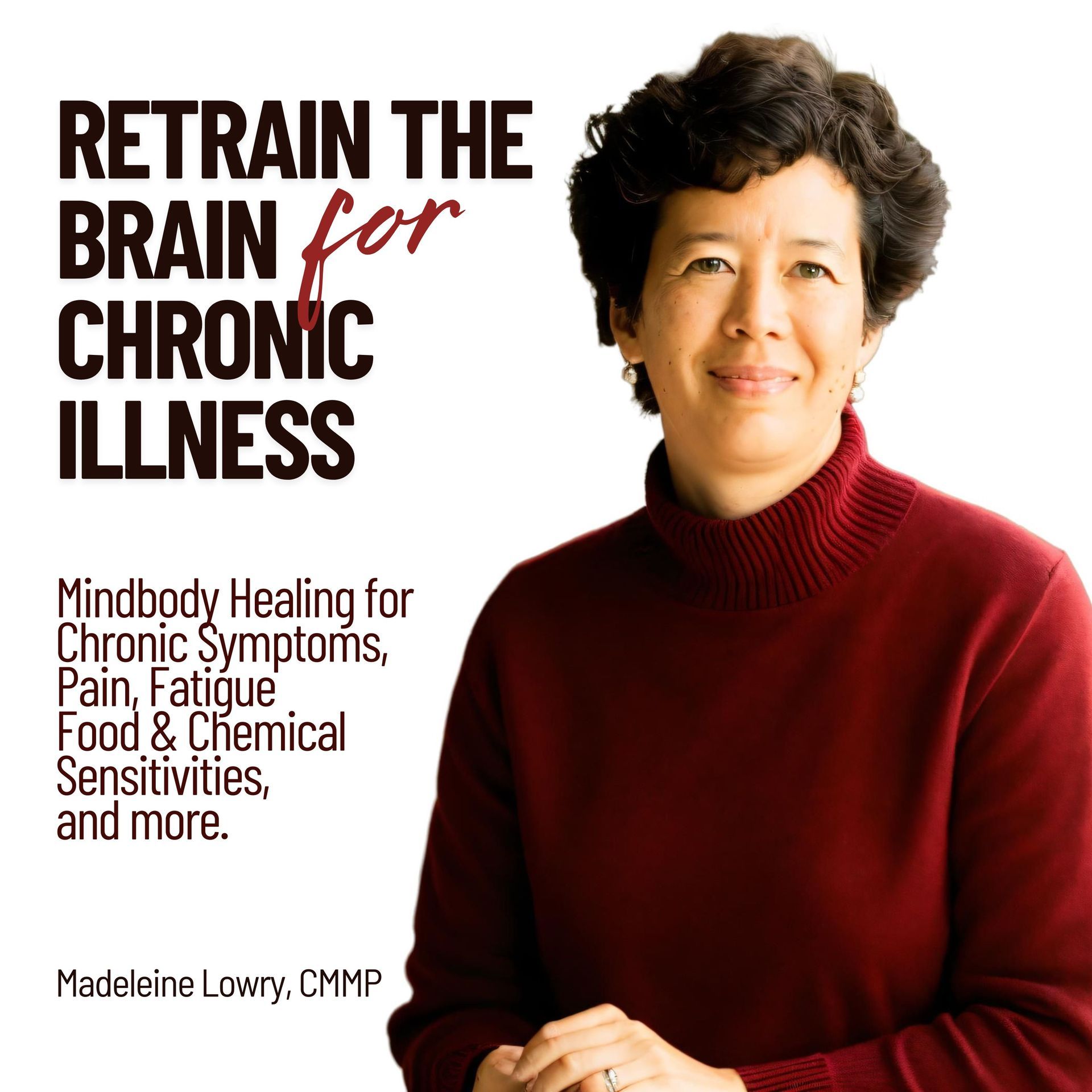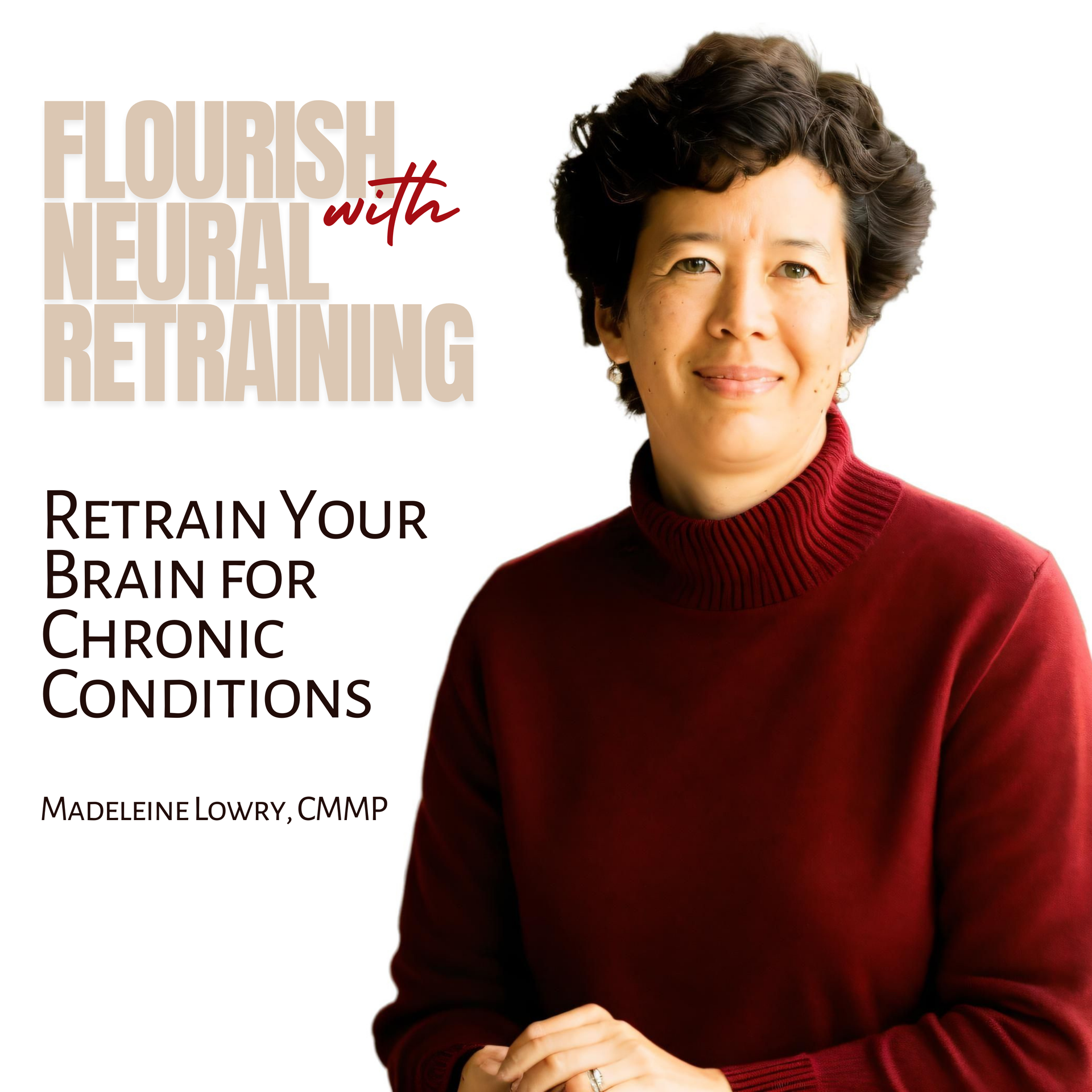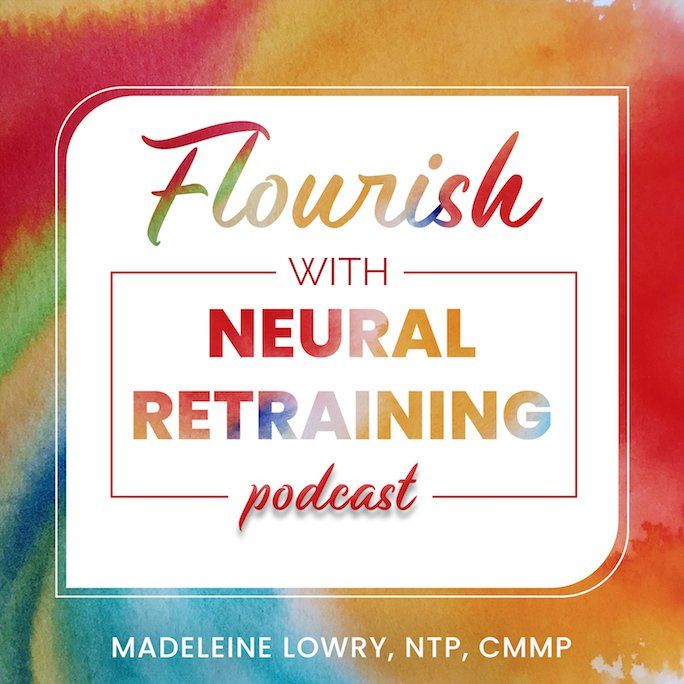The Neurobiology of Trauma and the MAP Method
Learn how the brain is affected by trauma, ten therapeutic objectives for trauma therapy, and how the MAP Method heals trauma quickly and gently.
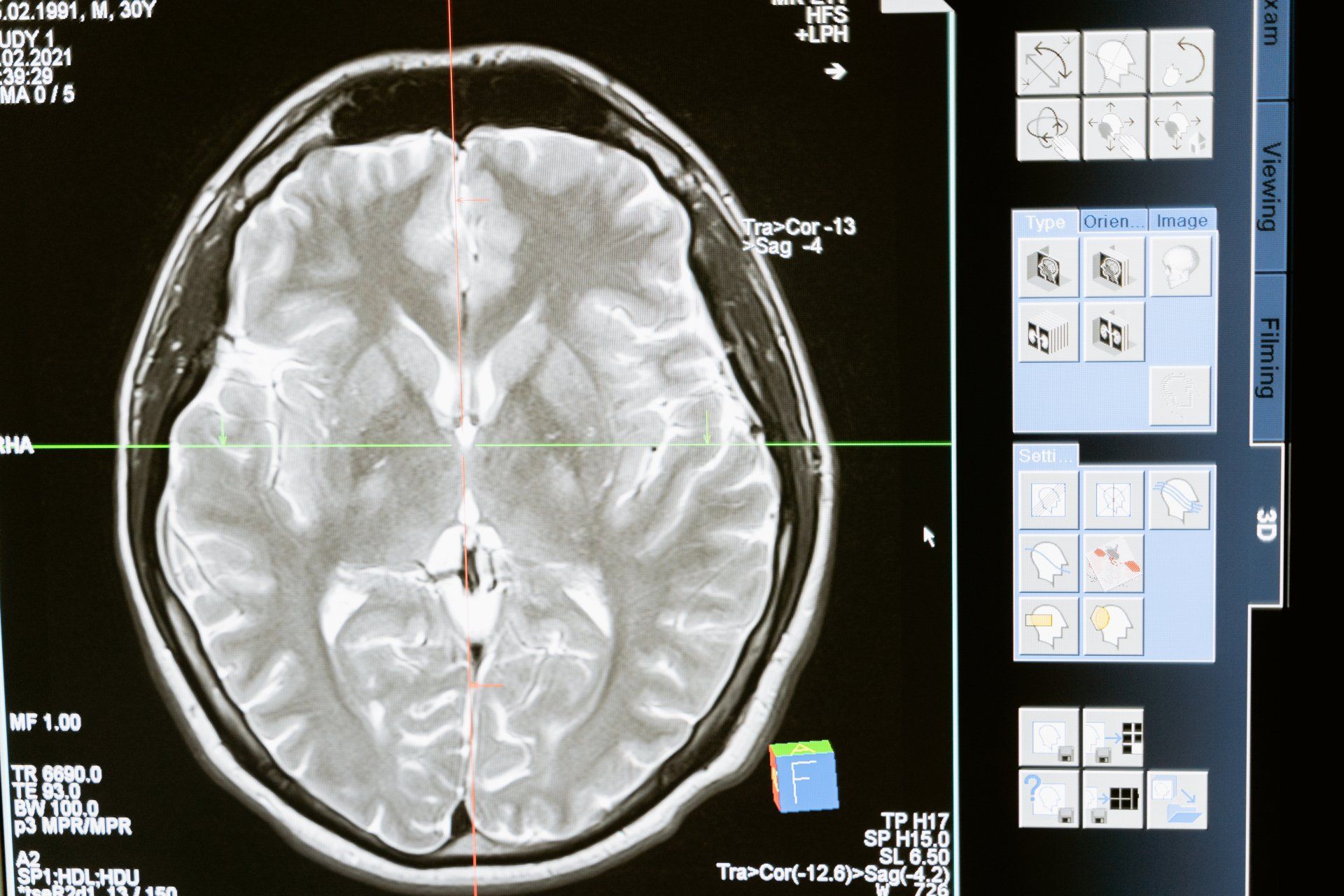
These excerpts are from a white paper published by Colette Streicher, licensed psychotherapist and founder of MAP, and the MAP Coaching Institute. To read the original paper and see the citations, please download the pdf file above.
Effects of Trauma on the Brain
What is a traumatic event? Traumatic events, according to the Center for Disease Control, are marked by a sense of horror, helplessness, serious injury, or the threat of serious injury or death.
It has been proven that the long-term impact of the trauma is worse when the person is trapped during the experience, and unable to move, escape or react in any way. In other words, when the person is feeling totally helpless, the brain has to adjust to help survive the event.
Brain imaging research has shown the effects of early trauma on certain areas of the brain as described by Dr. Bessel Van der Kolk, author of The Body Keeps the Score:
- The
right brain which includes the limbic, emotional brain, such as the right amygdala
is turned on and can get stuck on firing emotions of shame, guilt, fear, and terror. The right hemisphere also holds the unconscious part of the brain. It is the seat of creativity and imagination, which can be used both positively or negatively, and produces various responses, such as catastrophic thinking. - The
left brain shuts down during trauma. This is where the language area of the brain
is located (Broca). It is also the seat of conscious memories. The hippocampus which records and manages autobiographical memories is often off line during trauma. This is due to either an excessive level of cortisol, which affects data processing in this area of the brain, or the area is not yet developed in the child’s brain. - Trauma causes the back of the brain to become hyperactive, as it goes into survival mode. This includes the brainstem that regulates the fight, flight, and freeze response. During trauma the sympathetic nervous system that directs the body’s rapid involuntary response to dangerous or stressful situations is turned on and then tends to stay on.
- The front part of the brain, the frontal cortex, (thinking, planning, problem solving, decision making, insight, understanding) becomes inactive during trauma. This leads to difficulty in planning, creates a tendency toward overgeneralization, and extreme anxiety later on in life.
- The brain then loses integration as a result, and this means that the interconnections between the parts of the brain can be impaired. For example, the right and left brain (corpus callosum ) connection can be limited, as well as the frontal cortex and the back of the brain may lose connection. People lose their sense of coherence and self when the areas of the brain do not communicate well between one another. The lack of integration may also explain what is happening when the main personality of the traumatized person splits and segments into small parts. These trauma parts create different identities disconnected and sometimes even amnesic from the main personality.
- In addition to the general areas of the brain being affected by trauma, Dr. Van der Kolk explained that there are 4 specific areas in the cortex (top of the brain) that are actually changed by trauma. The first one is the ventral prefrontal cortex. Studies show that the ventral prefrontal cortex is connected to our ability to be flexible in our social behaviors, which enables healthy relationships in life. This area is affected by trauma, but research has also found more importantly, that it is the quality of the relationship with the caregiver(s) that affects this area most. Research has shown that the care giver’s way of relating to the child as young as 12-18 months, creates attachment preferences which have a huge impact on the child’s brain development. This area of the brain’s development will be affected by the repetitively painful experiences of not being seen, heard, mirrored, appreciated, and loved. The messages the child receives is “I am not heard, seen, I don’t matter, my needs are not being met, I am not safe”, and therefore, the child doesn’t know how to react to get their needs met. This will affect the child’s future relationships at school, with family, friends, and partners.
- The second cortex area affected by trauma is the dorsolateral prefrontal cortex. It is the time-awareness part of the brain that shuts down during trauma. This creates the impression for the traumatized person that the experience is going to last forever. This makes the experience overwhelming and unbearable. The person loses awareness that this is a past memory, that it is over, and reacts and feels exactly as if the event was still occurring in real time and will never end. Later on in life these memories can pop back up as flashbacks.
- The third cortex area turned down by trauma is the anterior cingulate. This part of the brain is all about determining what is relevant and important, both in our internal (mind and body) and external worlds. In the middle of trauma, the person is overwhelmed by all the dangerous threatening sensory data and information coming at them, and they don’t know what to focus on– it becomes impossible to discern what is relevant or not. The person is in a continuously alert state, not knowing when it’s safe to relax and trust. They are unable to distinguish between what is a true sign of danger or not. They become either hyperactive or hypoactive, influencing their future interactions and intimate relationships in life.
- The fourth and last cortex area affected by trauma is the medial parietal cortex right precuneus. This is the area of self-identity, self-consciousness, such as the ability to reflect and be self-aware. It is also connected to our ability to judge whether to act out of empathy and forgiveness.
Ten Therapeutic Objectives for Trauma Healing
Here are the therapeutic objectives deduced from these neuro-imaging studies.
Engage the areas of the brain that were firing during trauma:
- Focus on the right side of the brain as it is the side activated during trauma: the goal is to reduce the right amygdala’s activity that activates the fight, flight response This also engages the imagination and the creativity of the right brain to connect with the unconscious memories.
- The therapy used should not depend on the left brain activation such as the Broca area of the brain (speech), or on conscious memories within the hippocampus, logic, and linear thinking.
- Focus on the emotional brain (limbic) is core to healing trauma. The goal is to help the client learn to regulate their emotional responses, to tolerate feeling their emotions and not repress, numb, or express them inadequately
- Address unconscious memories recorded in the body that are inaccessible to the conscious mind
Reconnect parts of the disconnected brain:
- As the right and left brain may not be communicating as needed, activate the corpus callosum which connects the right and left brain..
- The top brain cortex is associated with higher level processes such as consciousness, thought, emotional control (to verify) , reasoning, language, and memory. To function normally, it needs to integrate vertically with the midbrain (limbic/emotional brain) and connect with the bottom brain (the brainstem), which sends signals from the brain to the rest of the body. The clusters of neurons in the brainstem put trauma victims in survival mode because they move the body into a constant state of fight, flight, or freeze.
Activate and integrate the 4 cortex areas that are shut down by trauma:
- Ventral prefrontal cortex - social behavior
- Dorsolateral prefrontal cortex - time awareness
- Anterior cingulate - relevance
- Medial parietal cortex right precuneus - self-awareness
What is the MAP Method?
MAP was developed in cooperation with the late Dr. Garry Flint, who was a psychologist working with patients with deep trauma, such as torture survivors, people suffering from schizophrenia, mind control, and many other extreme states. This experience is documented in his book, A Theory and Treatment of Your Personality, in which he outlines his discovery via his clinical observations. He discovered that there seems to be an “ally” in his client’s subconscious mind which was willing to help and guide the therapy process.
When Colette discovered his work, Dr. Flint was happy to mentor her and her son Valentin, in the method he developed called “Process Healing”, a novel and powerful use of Eriksonian metaphorical language and mindfulness. Colette was guided to expand this to address many other types of subconscious memories such as somatic memories (organs, endocrines, muscles, and cellular) as well as generational and cultural traumas, and more.
Dr. Flint enthusiastically supported the expansion of his original work and helped review and supervise the new additions. After 3 years of research and development we systemized the method, and designed and tested new instructions and protocols in order to make them most effective in treatment sessions.
Using the MAP Method, we communicate with the part of our mind that is beyond the conscious, and the subconscious/unconscious mind. It is often called the Authentic Self, which is the observer and has never been injured or conditioned. It is whole, complete, unconditional, and present– it is our innate intelligence. The MAP method calls this the “Superconscious”, and we discovered that this part of consciousness is actually willing and able to help in the healing process.
As with Internal Family System (IFS), MAP requires therapists to trust that the capacity and wisdom for self healing lies within each client. MAP is similarly founded on the recognition that we have an ever present “Untarnished Self” as Dr Schwartz, the founder of IFS explained.
Review of the Ten Therapeutic Objectives and MAP's Effectiveness
Based on the above neuroscience and imaging research, we have defined 10 therapeutic objectives which would be necessary to achieve successful trauma therapy outcomes. How might MAP address these objectives which are highlighted by Dr. Van der Kolk’s research? Let’s first explore the general areas of the brain activated during trauma:
Objective 1 - Right Brain Engagement
As described above, leveraging the abilities of the right brain is central to the healing process. One of the strengths of the right brain is its role in creativity and imagination.
MAP is in some ways similar to hypnosis by allowing the imagination to be accessed however, contrary to the classic approach of hypnosis, it has a few significant differences and advantages. As many clients resist being hypnotized, it is important to notice that with MAP there is no need for the client to be in a trance and the instructions are process-oriented.
Right brain engagement also comes into play here, as at the end of a session, the therapist may ask the client to use their imagination to create the missing support and resources they needed to fulfill their core needs at the time of the traumatic event.
They are invited to imagine the completion of the protective actions they were unable to take, thus creating an opportunity for the brain to change its relationship to the trauma event. This transforms the person’s memory of the event, which creates a new empowering option for the mind/brain. This is possible because the client is engaging their right brain, their creative brain to imagine a different outcome and is one key part of the healing process used in MAP.
Objective 2 - Minimal involvement of the left brain
With MAP, talking is not necessary. The client doesn’t have to share anything about the event or the subject addressed in the session for the treatment to be effective.
This makes it easier for traumatized clients who are often ashamed or feel guilty about what happened to them. Having this privacy allows the patient to experience the freedom and empowerment to choose how much information they feel ready to disclose. This also prevents re-traumatization as they don’t have to repeat the details of their trauma experience over and over again. Not only is this a key advantage for adults, but this aspect of MAP also allows us to work with small children who are often unable or unwilling to talk about their trauma experiences
Objective 3 - Quickly neutralize painful emotions in the limbic brain without flooding
This objective may be best demonstrated by an example from Annie Schaeffer, a French
MAP therapist, who did a MAP session for a Ukrainian refugee and her son. The two had just escaped the Afghanistan war, only to find themselves caught up in another war in Ukraine, and in the area most devastated by the attacks. The mother was asked to assess her level of stress thinking about a specific event she had witnessed. Even though it was the intro session where we usually take a lighter subject so we can train the client’s brain, she couldn’t find anything else except the one event that had been occupying all her attention for weeks.
When asked where she would place this intensity of this experience, she said the level of stress was a hundred million out of ten! At the end of the session the number she assessed was down to a 10/10! and she was smiling.
This is an example of how the emotional brain and the nervous system is calmed by a MAP session. Even though the level of intensity was extreme, the mother was able to tolerate the emotions she experienced as they didn’t last long and she didn’t have to focus on the details for the brain to rewire and process the memory. Most of the processing was done in the subconscious.
Objective 4 - Address unconscious memories recorded in the body
With MAP, we access the memories at the depth of the subconscious, including preverbal and prenatal memories, cellular memories, organs, endocrines, body parts, brain areas, generational history, etc. We tap into the wisdom of the body/mind to heal itself by inviting the Superconscious to search, find and heal memories that were disconnected from the whole. Through the association process, it locates all similar and connected unconscious events including the original event of the entire pattern to be treated as a package at the same time.
Objective 5 - Horizontal brain integration
There is an opportunity during MAP sessions to have the client share (left brain/ language area) insights and new perspectives. That is, to express what they have observed changing in their body, mind, breathing, posture etc. It is up to the therapist to then engage in a dialogue to further integrate the new material, memories, realizations and insights that have emerged in the client’s consciousness during processing.
Objective 6 - Integrate the brain from the top to the bottom
Here we are talking about vertical brain integration which means from the top of the brain - (cortex) to the emotional (center) to the brain stem/nervous system/body memories (bottom).
In a MAP session, after the processing and healing of a memory, the client often reports clarity and insights. The client’s ability to have a new perspective, as well as a better understanding of their experience, demonstrates the integration of the frontal lobe with the emotional brain.
In addition, because the client is in a state of mindfulness during a MAP session, as previously explained, the brain learns to integrate areas of the cortex with all other areas of the brain or nervous system.
During the processing time, a client often observes many types of body sensations, and changes in their posture, or may experience body pain that comes to the surface and then disappears once it has been processed.
Another way to integrate the brain vertically and horizontally is when the client gains insights, and is ready to share. This is helping integrate the brain from the cortex (sharing observation, thinking) to the emotional brain, and down the nervous system, brainstem and body.
The last four objectives focus on reactivating the CORTEX AREAS that are shut down by trauma.
Objective 7 - Bring the ventral prefrontal cortex online (emotional control)
The prefrontal cortex is related to social interactions, specifically the ability to control certain emotions in social situations, which also includes attention, focus and the ability to show empathy for others. Here trauma is only one aspect which influences this area of the brain. Research has actually proven that the early style of attachment with the primary caregiver is critical to the development of this area of the brain, and may be even more impactful than traumatic events.
Needs that have not been met in early childhood create and dictate character traits, these are also called predispositions. In MAP we address predispositions with specific instructions so we can address these types of early childhood memories created during the first 4 years of life.
Attachment issues such as not feeling heard, understood, protected, etc., are core needs which left unmet can become the theme of MAP sessions. When enough traumas have been cleared, we use another process using imagination to help clients rewrite their history.
Objective 8 - Activate the dorsolateral prefrontal cortex (time awareness)
During trauma this area of the brain is turned off, as a result, the person loses awareness of time and the understanding that things will change as time passes. For the integration of this area of the brain, the type of mindfulness we use in MAP has the client focus on an old memory but at the same time, on the changes happening in the present moment in their body/mind. According to Dr. Van der Kolk, the way we use dual consciousness stimulates dorsolateral prefrontal cortex and therefore is very helpful in recovering from the trauma event.
An additional advantage of MAP is that it directs the client to focus on the changes happening in the body and the mind. This mindful focus on the positive changes happening to them progressively moves them from a state of helplessness, to a state of hope, which in turn enhances their desire to continue benefiting from the therapy.
Objective 9 - Activate the anterior cingulate (relevance)
This area concerns our ability to know what to focus on, and what information is relevant in a given situation (association process).
This can be a difficult area for therapists to access. However we also discovered that we can ask the mind to heal the association and dissociation processes because we can address deep unconscious memories. This is achieved through the MAP method by directing the Superconscious to focus on finding and treating the memories which have affected the right precuneus. In other words, by treating the association process in the brain, it is able to then filter relevant information more accurately.
Objective 10 - Bring the medial parietal cortex online (self-awareness)
The last objective is to bring the medial parietal cortex online, or more specifically, to reactivate the right precuneus. This is related to self-identity. As with many therapies, once the client has healed many of their traumas, they naturally develop a new sense of self and agency.
To conclude: The purpose of the MAP Method is to empower individuals to quickly dissolve unconscious blocks, gently heal unresolved trauma, and easily overcome emotional stress.
Learn More
- Learn more about the MAP Method of advanced neural retraining.
- See the brain wave activity that happens in a MAP session.
- Try a free course about MAP, or see all the MAP Programs.
- Listen to our podcast: Flourish with Neural Retraining
- Get started with MAP by scheduling an Introductory MAP Session.


Madeleine Lowry, NTP, CMMP
Certfied MAP Method Practitioner
Madeleine specializes in neural retraining for chronic conditions. As a Nutritional Therapy Practitioner, she worked with many clients who were interested in eliminating allergies, sensitivities and intolerances. After learning a basic method and seeing its limitations, she trained in an advanced method of retraining the brain and now offers MAP sessions over Zoom and online self-paced programs for Anxiety/Depression, Sensitivities, Chronic Pain, Self-Healing, and COVID Long.
Related Posts

